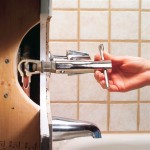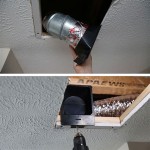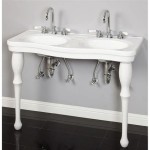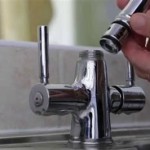Unveiling the Causes and Solutions for Foul Smelling Bathroom Sink Drains
A foul-smelling bathroom sink drain can be a common annoyance that most homeowners face. The unpleasant odor can permeate the room and create an unhygienic environment. Understanding the underlying causes of this issue is crucial for finding effective solutions. This article delves into the various factors contributing to a foul-smelling bathroom sink drain and provides practical ways to eliminate the odor.
Identifying the Culprits: Why Your Bathroom Sink Drain Smells Bad
1. Clogged Drainpipe: Hair, soap scum, and other debris can accumulate over time and clog the drainpipe, creating a breeding ground for bacteria and mold. The decomposition of these organic materials releases unpleasant odors.
2. P-Trap Odor: The P-trap is a U-shaped pipe under the sink that holds water to prevent sewer gases from entering the bathroom. However, if the P-trap dries out due to infrequent use or evaporation, the water seal breaks, and sewer gases can escape into the room.
3. Corroded Pipes: Old and corroded pipes can develop leaks, allowing wastewater to seep out and accumulate under the sink. This stagnant water creates an ideal environment for bacteria growth, resulting in unpleasant odors.
4. Damaged Vent Pipe: The vent pipe allows sewer gases to escape from the drainage system. If the vent pipe is damaged or blocked, sewer gases can back up and enter the bathroom through the sink drain.
Combating the Odor: Effective Solutions to Deodorize Your Bathroom Sink Drain
1. Unclog the Drainpipe: To remove clogs, use a drain cleaner or a physical drain auger. Pour the drain cleaner down the drain and let it sit for the recommended time. If using a drain auger, carefully insert it into the drain and rotate it to break up the clog.
2. Refill the P-Trap: If the P-trap has dried out, simply running water down the drain should refill it. However, if the P-trap is damaged, you may need to replace it.
3. Repair Corroded Pipes: Fixing corroded pipes requires professional plumbing expertise. Contact a qualified plumber to inspect and repair or replace the damaged pipes.
4. Clear the Vent Pipe: To unclog the vent pipe, check the roof for any obstructions such as leaves or debris. If the blockage is accessible, remove it carefully. If the blockage is not accessible, contact a roofing or plumbing professional.
Preventative Measures: Maintaining a Fresh and Odor-Free Bathroom Sink Drain
1. Regular Cleaning: Pour a mixture of baking soda and vinegar down the drain once a month to neutralize odors and prevent clogs. Rinse the drain with hot water afterward.
2. Use Drain Guards: Install drain guards over the sink drain to catch hair and debris before they enter the drainpipe.
3. Run Water Regularly: If you have infrequently used bathroom sinks, run water down the drain for a few minutes every week to keep the P-trap filled and prevent sewer gases from escaping.
4. Inspect Regularly: Check the sink drain and under the sink periodically for any leaks or damage. Address any issues promptly to prevent foul odors from developing.
By implementing these solutions and preventive measures, you can effectively eliminate foul odors from your bathroom sink drain and maintain a fresh and hygienic space.

How To Clean A Stinky Sink Drain By Home Repair Tutor
:max_bytes(150000):strip_icc()/__opt__aboutcom__coeus__resources__content_migration__mnn__images__2018__08__sink_drain-351af8e441034f319fe07f00c091d8b6.jpg?strip=all)
How To Clean A Smelly Drain Naturally

How Can I Help A Stinky Bathroom Sink Drain Cleaning More

Why Does My Bathroom Sink Have A Foul Smell After Cleaning
What The Heck In This Ugly Black Stuff My Wife Has Been Complaining About A Nasty Smell Coming From Her Bathroom Sink Since We Moved Into Our New House Two Years Ago

How To Clean A Stinky Sink Drain Home Repair Tutor

How To Clean Stinky Drains Liquid Plumr

Stinky Sink Here S What Causes A Foul Drain Smell

A Dry P Trap Might Be Why Your Bathroom Smells Water Wise Plumbing

5 Things To Try If You Have A Noisy Shower Or Bathroom Sink Drain
Related Posts







